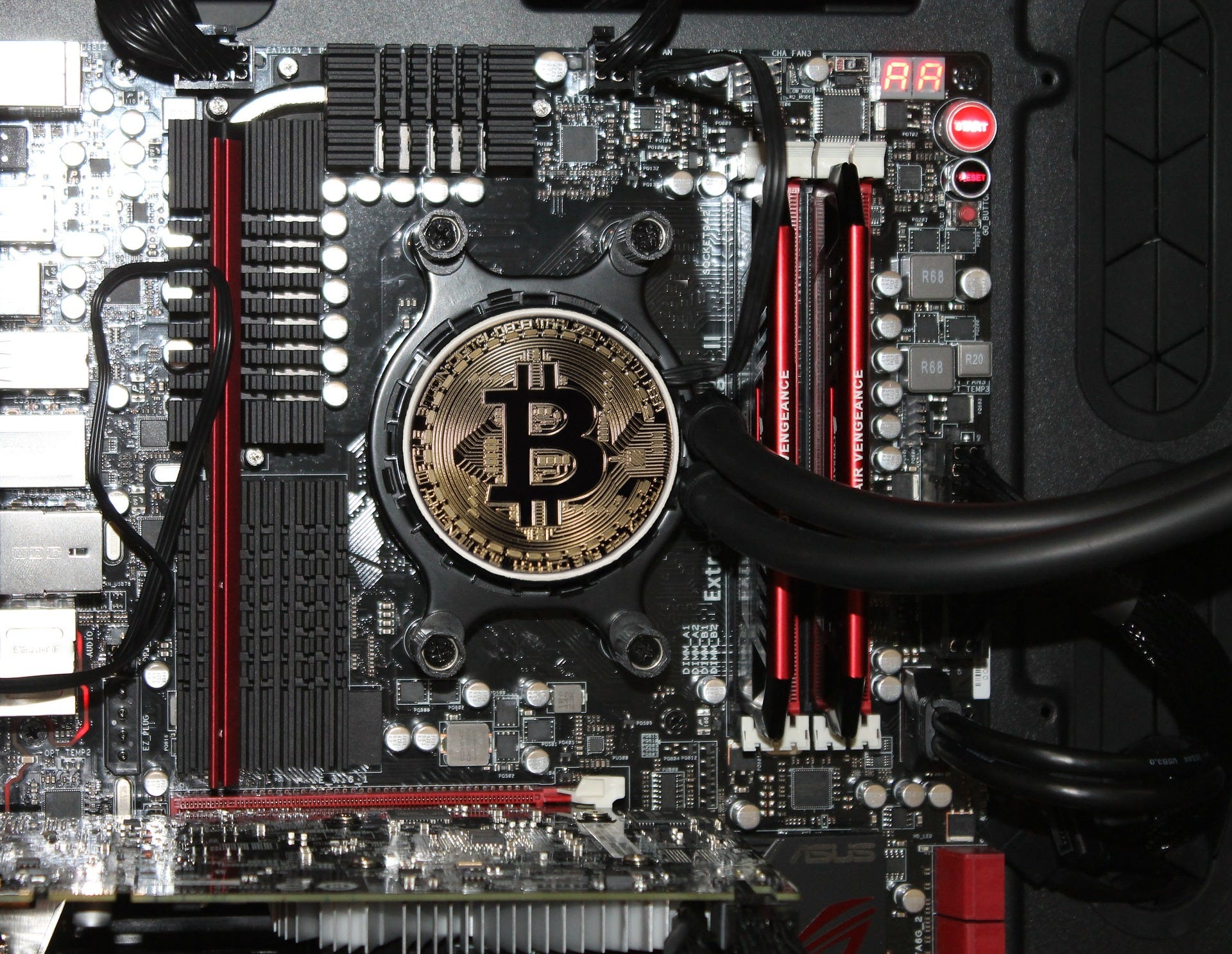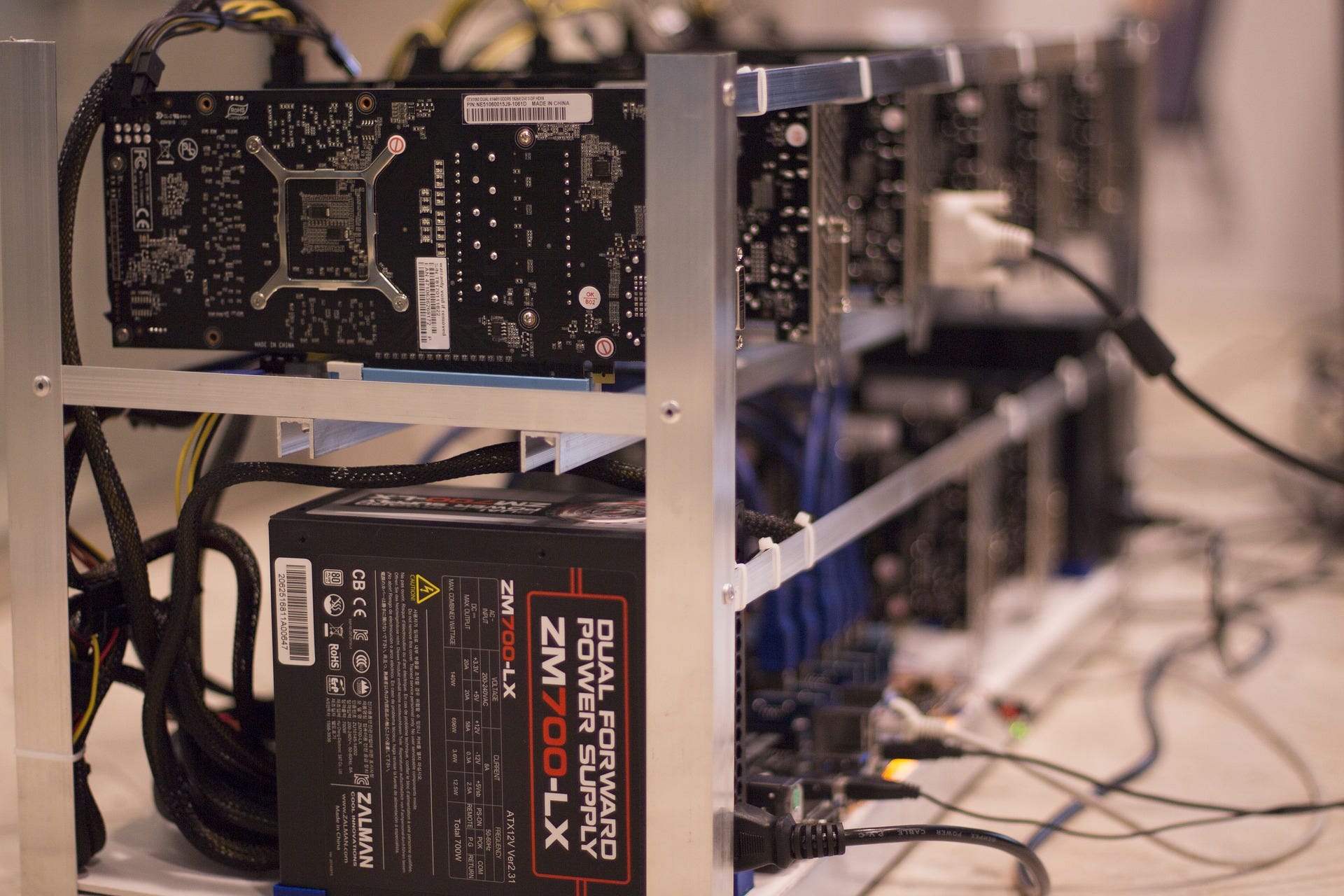Just as Bitcoin represents the decentralization of finance, blockchain represents the decentralization of technology — and decentralization, like democracy, must be defended.

Mamad checked his bearings and once he had determined the direction of Mecca, laid out his well-worn prayer mat and knelt down to pray. He was nervous, but his parents had repeatedly assured him that Allah would watch over him no matter where he was.
Mamad did not share their confidence.
Living in Mumbai, one of India’s most densely populated Hindu-majority cities, Mamad was understandably on edge.
As soon as Mamad was done with his prayers, he looked over his shoulder, where already some curious onlookers had peered through his office windows and quickly returned to his desk.
Born in the predominantly Muslim-majority city of Karachi in the latter half of the 19th century, Mamad’s father’s business suffered losses and finding limited opportunities in the city of his birth, he traveled to Mumbai (then called Bombay) to search out his fortune and establish himself as a lawyer there.
Although Mamad was not a particularly zealous Muslim, his faith meant that pursuing his legal career in a city where two out of every three citizens is a Hindu, was always going to be an uphill task.
Religious and sectarian tension between Muslims and Hindus in British India was not new. If nothing else, the occupying British had allowed such tensions to fester, figuring that it was far easier for the viceroy to divide and conquer than to face a united Indian front.
Yet on one steamy late summer evening in Mumbai, as Mamad was making his way from the local tea house to his office (the reed thin Mamad was a man without hobbies, for whom his work was his entertainment), something would happen that would change the course of Indian history forever.
Now it was no secret that Mamad was a Muslim lawyer and would often take on pro bono cases to help his fellow Muslims.
Well-known in the neighborhood where his humble offices sat, Mamad was generally well-liked by his neighbors and noted for being reserved, soft-spoken and industrious.
But Mamad also had enemies.
Taking up unpopular causes, particularly in the defense of Muslim rights and standing up for Muslims against systemic prejudice, Mamad had increasingly come into the crosshairs of some on the more radical Hindu fringe.
As Mamad crossed the street in late July of 1908, a Hindu man walked calmly across the street at the same time in the opposite direction.
As Mamad spotted the man from the corner of his eye, he was just about able to make out the unmistakable glint of reflective steel as the man pulled out a revolver and started aiming it at Mamad.
Before Mamad had an opportunity to react, from the darkened alley of a nearby side street, three men rushed forward and jumped on Mamad’s would-be assassin, overpowering him and bringing him to the ground.
Struggling violently, the assassin cursed loudly at Mamad in Hindu, as Mamad’s rescuers quickly disarmed the assassin of his weapon and held his face to the ground.

Rushing over, Mamad, his head in a whirlwind of fear, relief and bewilderment managed,
“Thank you, but why?”
One of the men holding down the assassin replied,
“Mamad, we have been observing this man you see here for some time. He comes from an ultra-nationalist Hindu element that believes that no Muslims should live in this city.”
“Which is why we have been watching him for some time.”
Mamad, an expression of genuine gratefulness sweeping across his face like the waves cresting upon Juhu Beach said,
“But sir, you are a Hindu too, are you not?”
The man, now smiling, looked up and said,
“Yes, but that does not mean that I hate you. I may not believe in what you believe in, I may not understand why you believe what you believe.”
“But I believe you have a right to believe what you believe and to practice that as well.”
“For what does it say about me and what I believe, if I cannot find the space in my heart to afford you that same freedom?”
Unbeknownst to the man who saved Mamad’s life, that act of kindness would change the course of history.
“Mamad” as he was known to friends and family, was none other than Muhammad Ali Jinnah, a man who would go on to found Muslim Pakistan out of the independence of India from the British Empire.
Because it’s hard to say how the survival of one individual may ultimately change the course of history.
Just as it’s hard to say how the survival of one blockchain may ultimately change the course of technology.
A Blockchain For Every Season
To say that the world of blockchains and cryptocurrencies is fragmented is to put it mildly.
Because the very nature of the cryptosphere is decentralized, any and every one can take a stab at creating a blockchain for their value proposition.
But what is more complex is securing these blockchains.
To the uninitiated, blockchains, the plumbing that underpins cryptocurrencies such as Bitcoin and Ethereum are based on a consensus model — typically requiring a 51% majority of the computers (or miners if you will) which secure blockchain transactions, to agree on any particular state and authenticity of transactions.

The problem with that is of course that a 51% consensus mechanism assumes that cryptocurrency miners, who receive rewards for securing the blockchain, value the cryptocurrency received, enough to secure the blockchain for that cryptocurrency.
And while Satoshi Nakamoto, the mysterious creator of Bitcoin was right that there is a disincentive for miners to secure fraudulent transactions on the blockchain, because that would undermine the value of the cryptocurrency itself — this assumption holds true if there were only one blockchain.
But there isn’t.
There are literally tons of blockchain protocols and each one has its own unique incentive mechanism, governance, ideology and value proposition, meaning that the less popular cryptocurrencies are prime for what is known as a 51% attack.
And it’s not just the more obscure cryptocurrencies.
Tyranny of The Majority
In the early days of this year, Ethereum Classic (ETC) was hacked using a “51% attack.”
In a nutshell, a single entity was able to control around 60% of the hashpower or mining power that secures ETC, creating a longer blockchain than anyone else and giving the entity the ability to “double spend” — that is to spend more ETC than they actually had.
The attack was picked up by Coinbase and led to that exchange and others freezing ETC trading.
To put things in perspective, ETC is the world’s 23rd largest cryptocurrency by market cap (correct at time of writing) and if hackers could attack a cryptocurrency that large, imagine the other “lesser” coins.
But not all blockchains are built equal.
Being the world’s first cryptocurrency, Bitcoin’s blockchain is necessarily far more robust than the others.

Speaking to Forbes, Mati Greenspan, Senior Analyst at online brokerage eToro believes that the 51% attack on ETC may actually strengthen the unassailable dominance of the Bitcoin blockchain,
“The most common type of attack in crypto is known as a 51% attack. Basically, if a foul player manages to control more than half of the network’s mining power (hashrate), they can rewrite history.”
“This is also known as a reorganization or “reorg” and the most common reason to do this would be to create a double spend. Or, erase a previous transaction so you can get your coins back and spend them again.”
“Coinbase’s blog identified no less than 15 reorgs, several of which contained suspicion of double spend activity amounting to an approximated $1.1 million, which has been siphoned from the network.”
“Again, it’s important to understand that ETC is not the same as ETH. In the initial moments after the blog was released, both coins sold off in the confusion but ETH did manage to regain composure fairly quickly.”
“The reason is that Ethereum has a hashrate of about 20 times that of Ethereum Classic. So, while it might be possible to temporarily get enough hashrate to control 51% of ETC’s network, it would be practically implausible to affect ETH in this way.”
“Putting things into perspective, if someone is dreaming about trying to 51% attack Bitcoin, they would need about 4,500 times the amount of hash than they do to attack ETC.”
But while that secures the case for Bitcoin and other highly dominant cryptocurrencies such as Ethereum, what about for lesser coins?
Do they not deserve a chance to survive as well?
The hack of ETC may have been a timely reminder that immutability of the blockchain, one of its key value propositions, must never be taken for granted.
Immutability For Anyone is Democracy for Everyone
Interestingly, at approximately the same time that ETC was hacked, Bitcoin developers noticed some peculiar behavior on the Bitcoin blockchain as well.
A large number of unidentified OP_RETURN transactions were discovered — a type of Bitcoin transaction that is used for embedding data into the Bitcoin blockchain.
Such transactions can be used for anything from proving the existing of some data at a specific point in time (proof-of-existence), to the issuance of new assets on top of the Bitcoin blockchain.
It was eventually discovered and verified that the transactions were done by VeriBlock, a project that piggybacks on the Bitcoin blockchain in an effort to better secure alternative blockchains and cryptocurrencies.

It has been so successful, that VeriBlock’s transactions now account for almost 1 in 5 of all daily Bitcoin transactions.
And it makes absolute sense.
For those not yet in the know, cryptocurrency miners “look” for the longest blockchain to add to because the longest blockchain is the one that represents the “truth” and the one that other miners have added the most to.
This is a gross oversimplification of how securing the blockchain works, but it assists in understanding VeriBlock’s proposition.
Among public blockchains, simply by being the first one, Bitcoin’s blockchain is first among equals and represents the “longest chain” so it makes absolute sense for fledgling blockchains to piggy back onto it, instead of trying to brute force their way towards blockchain security.
Which is where companies like VeriBlock come in with the concept of proof-of-proof (PoP) — a supplemental consensus mechanism used by other blockchains that integrate with VeriBlock.
Because other blockchains have security issues thanks to the relatively limited incentive for mining these chains compared to Bitcoin, they are far more easily overpowered by a 51% attack, of the sort that occurred to Ethereum Classic in the early part of this year.
And a 51% attack is particularly damaging because it allows the attacker to rewrite history and spend the cryptocurrency of that blockchain more than once — a blockchain’s worst nightmare.
While the resources required to mount a successful 51% attack on established blockchains like Bitcoin are substantial, relatively newer ones are fair game for malicious actors and anarchists.
VeriBlock provides one solution in that it improves the security of these alternative blockchains by embedding the current state of the blockchain’s ledger into the Bitcoin blockchain.

It’s a bit like carving your initials into the Washington Monument. It costs a lot more to build another Washington Monument than it does to take a butterfly knife to its marble — not that I am for one minute recommending anyone do so — to create a permanent impression on a piece of history.
And VeriBlock allows other blockchain developers to leave the security to the Bitcoin blockchain while focusing on what matters more — developing the protocols and applications on the new blockchain.
In many ways, VeriBlock’s solution is as ingenious as it is efficient — instead of trying to reinvent the wheel, new blockchains can simply rely on the hashrate of Bitcoin and piggyback on the massive amount of computing power that is already pointed at the Bitcoin network.
To that end, Bitcoin Core contributor Jeff Garzik is part of the VeriBlock team, an unofficial “sanction” of the use of the Bitcoin blockchain to further democratize access to blockchain resources.
To be sure, the idea of embedding alternative data into the Bitcoin blockchain is not new and there has been technical debate over whether these sorts of transactions should even be encouraged as long as five years ago, which led to the introduction of the OP_RETURN operator in Bitcoin Core 0.9.
And whether or not use cases such as those like VeriBlock ought to be even allowed is still debatable — being a permissionless public blockchain, Bitcoin’s blockchain will work with anyone willing to pay a fee to get their transactions on the blockchain.
There’s nothing to stop VeriBlock’s software from being used with other similar blockchains as well, providing some degree of redundancy and scalability — possibly leading to cross-blockchain proof-of-proofs and further securing blockchains at lower costs and with greater efficiency by relying on existing and disparate mining resources.
But VeriBlock’s solution does have one major drawback — it undermines the raison d’etre of Bitcoin’s creator Satoshi Nakamoto — to create a decentralized spendable currency.
VeriBlock actually makes it more expensive to make actual “medium of exchange”-type transfers on the Bitcoin network due to the limited availability of block space.
But so long as there are users who are willing to pay Bitcoin transaction fees in an effort to secure alternative blockchains, there’s little that anyone can do about it and that is perhaps the true beauty of blockchain technology — there is no single narrative of the blockchain value proposition.
Whereas Satoshi Nakamoto may have envisaged Bitcoin as a frictionless global currency, decentralization has meant that there have continued and will likely continue to be, a variety of narratives for Bitcoin — as a store of value, as a medium of exchange, as a unit of account — and even as a means to secure other blockchains.
About the Author: Patrick Tan
CEO of Novum Global Technologies, a cryptocurrency quantitative trading firm. Trading up to 100,000 times a day the way only an algorithm could.
Remark: This article first appeared on Altcoin Magazine and is hereby republished with permission by SuperCryptoNews .


